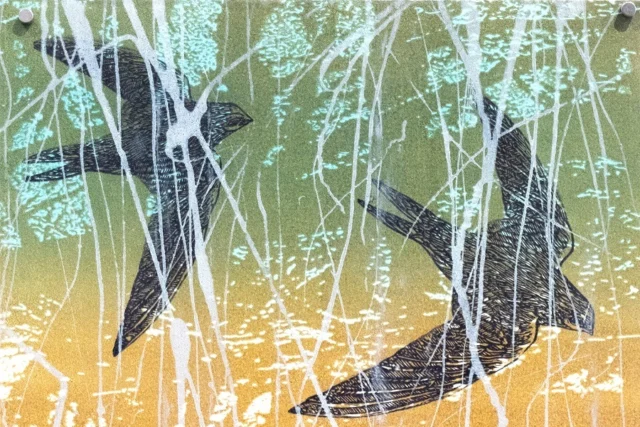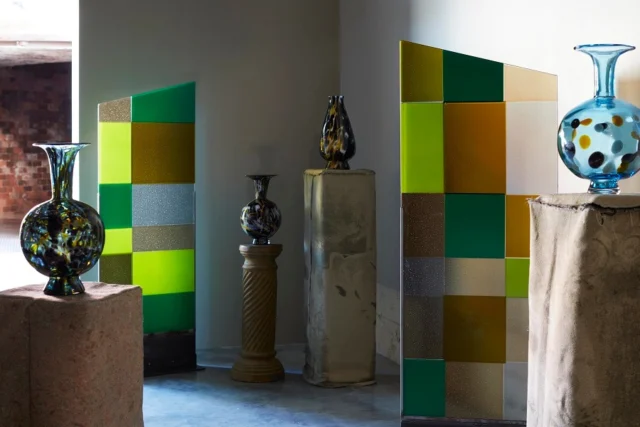“SPORT is a storytelling machine,” says Guy Hansen, curator of the National Library’s new exhibition, “Grit & Gold: Tales from a Sporting Nation”.
With heroes and villains, triumph and failure, comedy and tragedy, it’s sheer drama, and best of all, he says, is that more than 90 per cent of the images in the show come from the library’s own holdings, reflecting well on its collection.
The show is definitely one for the general public because, in a country that sees itself as a sporting nation, “everyone is invested in these stories and they reflect what’s going on in our broader society,” he says.
“I’m really a historian and I believe that it’s a very good way to explore Australian history… the purpose of the exhibition is to look at the history of Australia through the lens of sport.”
He’s particularly chuffed that on July 11 a meeting of the Australian Society for Sports History will be held at the library to be followed by a panel discussion featuring personalities such as sporting pioneer Katrina Fanning and former broadcaster Tim Gavel.
The six-part exhibition begins with a section called, naturally enough, “The Game Begins”, which picks up on the influence of British sports, such as rowing, boxing, cricket, football, horse racing and hunting in colonial times.
Although throughout the exhibition First Nations’ sportspeople are represented, there’s relatively little documentation of their pre-colonial sporting activities. Hunting wasn’t a sport for the original inhabitants and while there’s the old story that AFL was grounded in an earlier Aboriginal sport, it’s difficult to pin down.
But many cases of famous Aboriginal athletes are included, such as boxer Jerry Jerome and the first cricket team to travel to the UK.
The exhibits are by no means only two dimensional and a centrepiece is the magnificent 1867 silver Marquess of Queensberry’s boxing trophy with the accompanying rule book nearby.
Patriotism plays a big part, and during World War I the government used Australians’ interest in sport to appeal to potential enlistees according to the slogan, “Play Up, Play and Play THE Game” shown in a 1916 poster.
The second section of the exhibition is called “Grassroots” and this pays tribute to the widely-held belief that Australia is at heart a sporting nation.
Here we see images of backyard cricket, kids’ sport, lifesavers, nuns playing basketball and a pair of contrasting pictures showing “The Hill” at Sydney Cricket Ground in 1936 and 1978 – but it doesn’t exist any more, as Hansen points out.
Fulfilling Hansen’s promise of drama, there is a section devoted to “Sporting Spectacles”, not least the Burns-Johnson boxing match of 1908, the 1938 Empire Games and the 1956 Olympics.
The Winfield State of Origin Shield, 1980, with the slogan “Mate Against Mate, State Against State”, is almost a sporting spectacle in itself.
Deeply cultural though sport may be, it’s not without its venal side, and the third section is called simply, “Making Money”.
A 1934 poster shows the favourite famous cyclist-turned-politician, Sir Hubert “Oppy” Opperman, advertising the Malvern Star bicycle.
Nearby, we see a radiant Don Bradman advertising cigarettes in the 1949 Capstan Test Cricket Calendar and on the same wall hangs a beautiful 1995 surfing poster by Gerry Wedd advertising the wares of Mambo.
An underlying theme of the show is the increasing professionalisation in Australian sport and the fourth section, “Towards a level playing field”, shows this in spades, with a particular emphasis on women in sport.
Lauren Pearce, of the Demons, and Caitlin Gould, of the Crows, are seen competing for the ball during the 2022 AFLW grand final.
A special exhibit will be Liz Ellis’s netball dress alongside Ash Barty’s Wimbledon outfit and Evonne Goolagong’s trophy, also from Wimbledon.
The most popular part of the show is bound to be the one called “Superstars.”
There’ll be the usual suspects, such as champion swimmer Dawn Fraser, Shane Warne at the MCG during the 2006 Ashes series and Betty Cuthbert’s “Golden Girl” moment at the 1956 Olympics.
Paralympian and disability advocate Dylan Alcott is there, cricketer Steve Smith celebrating his double century in 2019, basketball legend Lauren Jackson and Australian soccer captain, Sam Kerr.
An almost artistic poster shows a young Johnny Warren promoting his slogan, “I told you so”, his lifelong argument that Aussies could find a place in international soccer.
Almost surprising in the “Superstars” section is the homely touch of a bookcase filled with sporting biographies, so that visitors can dip into the lives of their favourites.
“Grit & Gold: Tales from a Sporting Nation”, National Library of Australia, June 9-November 5.
Who can be trusted?
In a world of spin and confusion, there’s never been a more important time to support independent journalism in Canberra.
If you trust our work online and want to enforce the power of independent voices, I invite you to make a small contribution.
Every dollar of support is invested back into our journalism to help keep citynews.com.au strong and free.
Thank you,
Ian Meikle, editor

















Leave a Reply